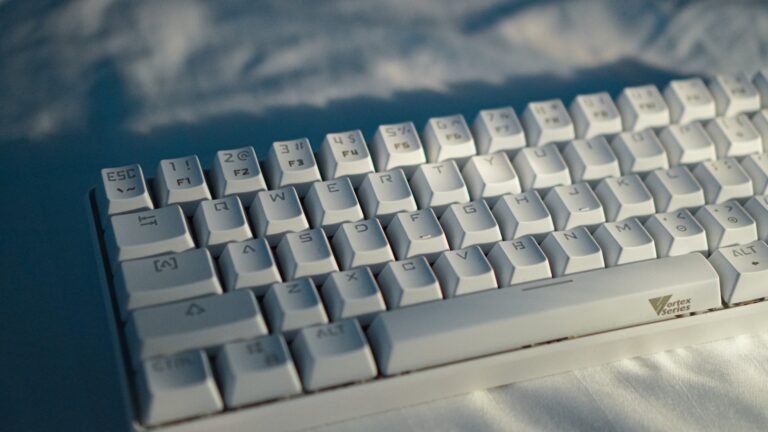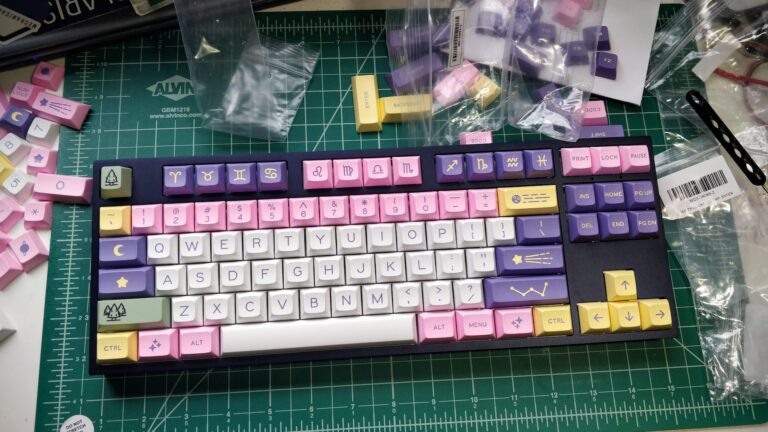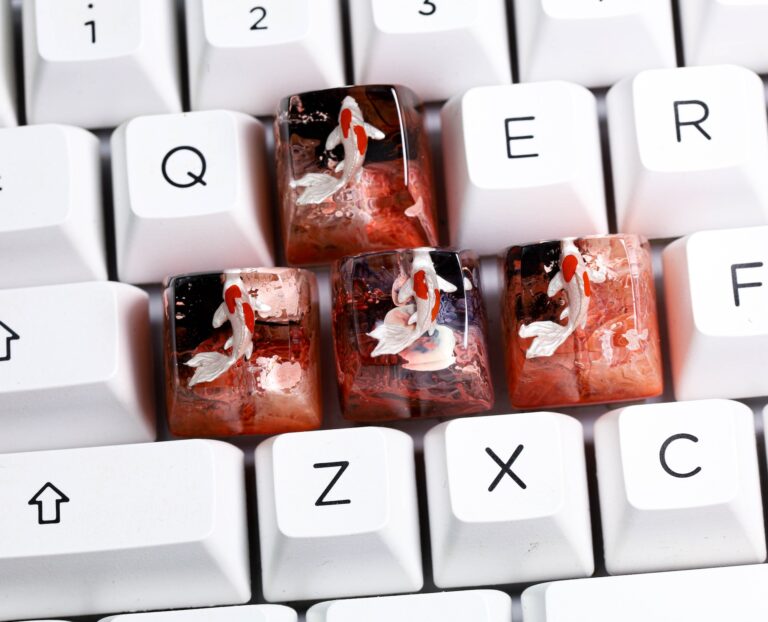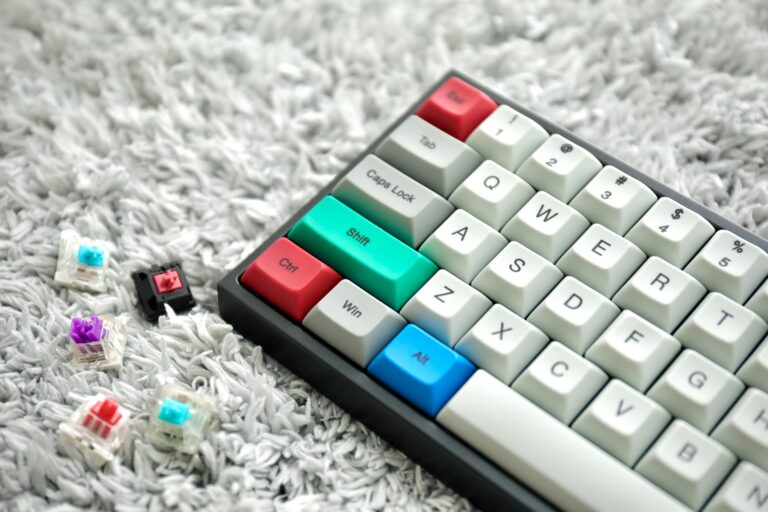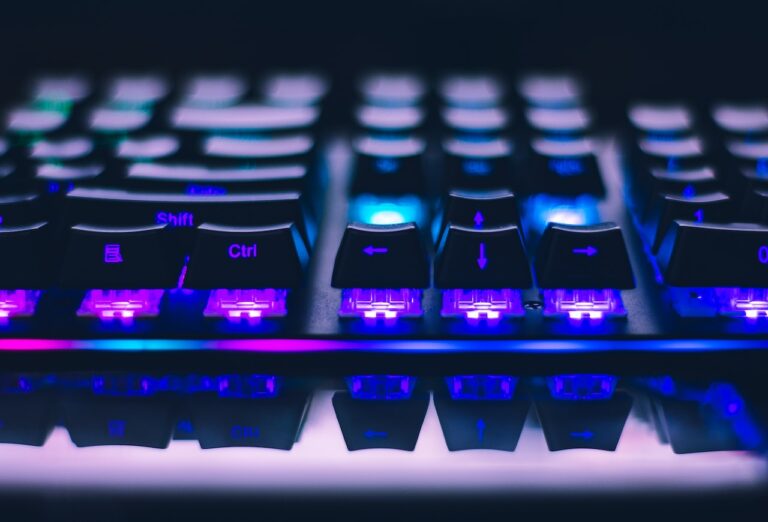Keycaps not only determine the overall aesthetics of a mechanical keyboard but also affect the typing experience. Different materials offer varying levels of durability, sound, and feel. In recent years, keycap material experimentation has become a hot topic among keyboard enthusiasts, leading to the development of innovative and unique options like metal, wood, and even resin. In this blog post, we will delve into the various keycap material options available and their impact on typing experience and customization.
Note: Some of the links here are affiliate links. There’s NO additional cost for you, but it does help our team to earn some coffee money to keep us and you typing.
1. ABS (Acrylonitrile Butadiene Styrene)
ABS is the most common keycap material found in mechanical keyboards. It is known for its affordability, lightweight nature, and ease of customization. ABS keycaps are generally smoother to the touch and have a slightly softer feel compared to other materials. However, they are susceptible to wear and shine over time, particularly with heavy usage. Despite this, ABS keycaps remain a popular choice due to their versatility and affordable price point.
2. PBT (Polybutylene Terephthalate)
PBT keycaps have gained significant traction in recent years due to their superior durability and resistance to wear and tear. They are known for their textured surface, providing a more premium and satisfying typing experience. PBT keycaps are less likely to develop shine or become oily with extended use, making them a preferred choice for those seeking long-term reliability. However, the customization options for PBT keycaps are more limited compared to ABS keycaps.
3. Double-Shot Keycaps
Double-shot keycaps are made by injecting two different plastics into a mold simultaneously, resulting in a keycap with legends (characters) that will never fade or wear off. The legends are created using a different colored plastic, ensuring long-lasting visibility. This manufacturing process is commonly used for both ABS and PBT keycaps, providing the best of both worlds in terms of durability and visual appeal. This process allows for endless design possibilities and opens the door for customization options.
4. Metal
For those who prefer a premium and luxurious touch, metal keycaps are an excellent choice. Made from materials like aluminum, brass, or zinc alloy, metal keycaps not only offer a distinct feel but also add a touch of luxury to your keyboard setup. Metal keycaps are incredibly durable and resistant to wear, making them a long-lasting investment. However, they can be expensive and quite heavy, which may affect the overall typing experience for some users.
5. Rubber
Rubber keycaps offer a softer and more cushioned feel compared to plastic keycaps, resulting in a more comfortable and tactile typing experience. It also absorbs the sound generated by keystrokes, making it an ideal choice for those who work in shared spaces or prefer a quieter environment while typing or gaming. However, it’s worth noting that rubber keycaps may not be for everyone. Some users might find the softness of the rubber material to be less satisfying compared to the solid feel of plastic keycaps. Additionally, rubber keycaps can be more difficult to clean, as they tend to attract dust and debris more easily.
6. Artisan Keycaps
Artisan keycaps are a creative way to add a touch of personality to your mechanical keyboard. Handcrafted by skilled artisans, these keycaps are often made from resin or other unique materials. Artisan keycaps come in various designs, from cute characters to intricate sculptures, and are highly sought after by collectors. Resin keycaps are usually compatible with backlighting, creating stunning visual effects. While artisan keycaps may not offer the same durability as other materials, they provide an exclusive and eye-catching aesthetic.
7. Wood
Wood keycaps add a touch of nature to your mechanical keyboard setup. Crafted from various types of wood, including walnut, oak, and cherry, these keycaps offer a warm and organic feel while typing. Wood keycaps are known for their unique grain patterns and natural variations, making each keycap a one-of-a-kind piece. However, they require extra care and maintenance to prevent drying or warping over time. They are also more susceptible to scratches and damage.
The Bottom Line
When it comes to keycap materials for mechanical keyboards, the choices are vast and exciting. As the mechanical keyboard community continues to grow, so does the demand for innovative keycap materials. Manufacturers and enthusiasts are constantly experimenting with new materials to enhance the typing experience and meet the diverse needs of keyboard users.
Selecting the right keycap material for your mechanical keyboard ultimately depends on your personal preferences and typing style. Whether you prioritize durability, aesthetics, or customization, there is a keycap material out there that will enhance your typing experience. Experimenting with different materials can be a fun and rewarding journey, allowing you to truly personalize your mechanical keyboard setup. So go ahead, explore the world of keycap material experimentation, and find the perfect match for your mechanical keyboard!









